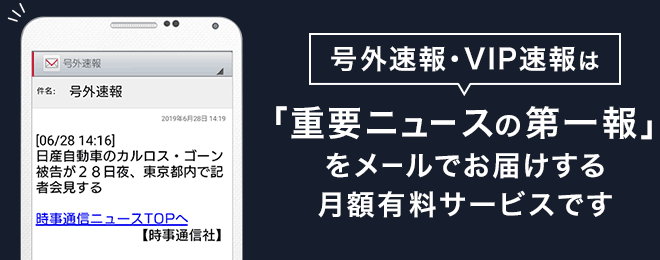小惑星上の岩、AIで高速識別 土木、防災などに応用も―東大
東京大の研究チームは7日、日本の探査機「はやぶさ2」と米国の「オシリス・レックス」がそれぞれ撮影した小惑星「りゅうぐう」と「ベンヌ」の多数の写真から、人工知能(AI)を利用して1メートル以上の岩計約20万個のサイズや位置、形状を短時間で自動識別することに成功したと発表した。
解析から、自転速度が異なるりゅうぐうとベンヌでは、表面の岩や土砂の移動方向が逆になっていたことも判明。惑星科学だけでなく、地上の土木、防災への応用も期待できるという。論文は同日、英科学誌サイエンティフィック・リポーツに掲載された。
東大の清水雄太特任研究員と宮本英昭教授らのチームは、地球や他の天体の岩石約7万個をAIに学習させ、自動識別するシステムを開発。りゅうぐうとベンヌの高解像度画像約1万枚を読み込ませた結果、りゅうぐう表面で約2万個、ベンヌで約18万個の岩をそれぞれ識別した。
研究チームは、りゅうぐうとベンヌ上の岩のサイズ分布に着目。地上の土石流の観察で、岩や土砂は流れた方向に向けて次第に大きくなることが知られており、りゅうぐうでは赤道から南北両極に、ベンヌでは逆に極から赤道に向けて岩が移動していることが判明。りゅうぐうは自転速度が7.6時間と遅く、ベンヌは4.3時間と速いことによる遠心力の差がこの違いを生じさせることも分かった。
識別にかかる時間は1天体当たり半日程度と高速で、2026年度に打ち上げられる火星衛星探査計画「MMX」などでも利用される予定という。
清水特任研究員は「地上でも定期的にドローンで広範囲の斜面を撮影し、大量の岩石を識別しておくことで、崩落の前兆を検出する応用も考えられる」と期待を示した。(2025/04/08-07:05)

Japan Succeeds in Identifying Asteroid Rocks Rapidly Using AI
A University of Tokyo team Monday said that by using artificial intelligence technology, it succeeded in rapidly identifying from photographs the size, location and shape of some 200,000 rocks on two asteroids.
The photos of Ryugu were taken by Japan's Hayabusa2 unmanned asteroid probe, while those of Bennu were taken by the U.S. probe Osiris-Rex. The findings were published Monday in the British journal Scientific Reports.
The team, including university project researcher Yuta Shimizu and professor Hideaki Miyamoto, hopes to apply its findings not only to planetary science but also the fields of civil engineering and disaster prevention on Earth.
In its research, the team fed an AI system information on some 70,000 rocks on Earth and other celestial bodies and developed an automatic rock identification tool.
After being fed some 10,000 high-resolution photos of Ryugu and Bennu, the tool identified some 20,000 rocks at least 1 meter in size on the surface of Ryugu and around 180,000 such rocks on Bennu.

最新ニュース
-
容疑者、事前に凶器準備か=自宅から刃物2本押収―女子高生刺殺・埼玉県警
-
東洋大が勝ち点1=東都大学野球
-
16日の日本選手=米大リーグ
-
名門復活、王者を撃破=アーセナル、16季ぶり4強―サッカー欧州CL
-
大谷が先頭打者本塁打=今季初、2試合ぶり6号―米大リーグ
写真特集
-
ラリードライバー 篠塚建次郎
-
元祖“怪物” 巨人・江川卓投手
-
つば九郎 ヤクルトの球団マスコット
-
【野球】「サイ・ヤング賞右腕」トレバー・バウアー
-
【野球】イチローさん
-
【スノーボード男子】成田緑夢
-
【カーリング】藤沢五月
-
【高校通算140本塁打の強打者】佐々木麟太郎
















